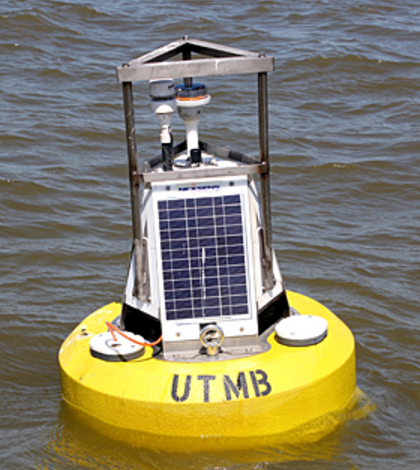University Of Toledo Launches Maumee Bay Buoy

It’s summer time in the Great Lakes region, and buoy deployments are ramping up. For Lake Erie, the focus is especially acute as water quality experts are keen to monitor its conditions as the algal bloom season gets underway. Indeed, June is the most important month when it comes to the size of any bloom because the precipitation that falls in no small way impacts nutrient runoff into the lake.
Researchers at the University of Toledo got the Maumee Bay buoy back into the water at the beginning of June. It sits just off the shore of Maumee Bay State Park and is equipped with a YSI EXO Water Quality Sonde to measure parameters including temperature, turbidity, dissolved oxygen, pH and blue-green algae. Data from the platform are recorded with a NexSens data logger and shared via cellular telemetry with the Great Lakes Observing System website.
It is the second year that the data buoy has been deployed in the bay as part of a large network of buoys throughout the western Lake Erie basin that keep an eye on the spread of harmful algal blooms. The big goal there is to make sure that drinking water quality is safe for those living nearby, but U. of Toledo experts are also interested in segmenting the science behind the issues.
One important parameter that they key on is pH, as it can tell them a lot about how algae are behaving. For instance, a rise in pH (more basic) means that algae are growing very fast because they are sucking a lot of carbon dioxide out of the water.
Another question that investigators at the university are tackling is how algae behave during nighttime. There are lots of data that deal with its actions during the day, but not very many definitive investigations cover how it acts during the night. To fill that gap, graduate students at the university plan to sample during a 24-hour period in August, at the height of the 2016 bloom, to figure out how conditions change in darkness.
Featured Image: Maumee Bay buoy deployed by University of Toledo scientists, June 2016. (Credit: University of Toledo)




0 comments